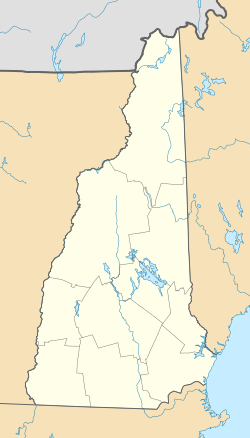Gridley River facts for kids
Quick facts for kids Gridley River |
|
|---|---|
| Country | United States |
| State | New Hampshire |
| County | Hillsborough |
| Towns | New Ipswich, Sharon, Peterborough |
| Physical characteristics | |
| Main source | Wapack Range New Ipswich 1,480 ft (450 m) 42°46′45″N 71°53′28″W / 42.77917°N 71.89111°W |
| River mouth | Contoocook River Peterborough 818 ft (249 m) 42°50′8″N 71°58′36″W / 42.83556°N 71.97667°W |
| Length | 6.3 mi (10.1 km) |
The Gridley River is a small but important river in southern New Hampshire, United States. It flows for about 6.3 miles (10.1 km). This river is a tributary, which means it flows into a larger river. The Gridley River joins the Contoocook River. The Contoocook River is part of an even bigger watershed called the Merrimack River watershed. Most of the Gridley River's journey happens within the town of Sharon.
Contents
The Gridley River's Journey
The Gridley River starts its adventure in the northwestern part of New Ipswich, New Hampshire. Its source is on the western side of Kidder Mountain, which is part of the Wapack Range. Here, it begins as a small stream.
From Stream to River
As the little stream flows, it heads west. It soon reaches a place called Tophet Swamp. In this swamp, another small stream joins the Gridley River from the northeast. This adds more water to the growing river.
Through Sharon and Beyond
After leaving Tophet Swamp, the river quickly enters the town of Sharon. It continues to flow north. Along its path, it moves through many wetlands. These are areas where the land is often wet or covered with water. The river also passes through some steep areas. Finally, the Gridley River reaches the Contoocook River. This meeting point is just inside the southwestern corner of Peterborough.
Why Rivers Are Important
Rivers like the Gridley River are very important for many reasons. They provide homes for different kinds of plants and animals. Rivers also help carry water across the land. This water can be used by people for drinking or farming. They are a vital part of the natural world.



